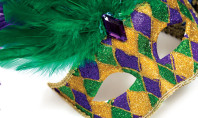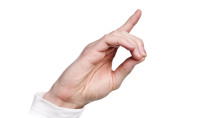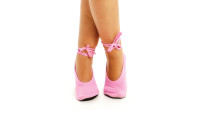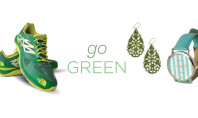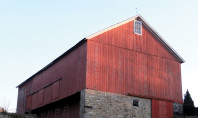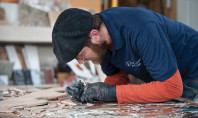Home Trends: Wall Coverings
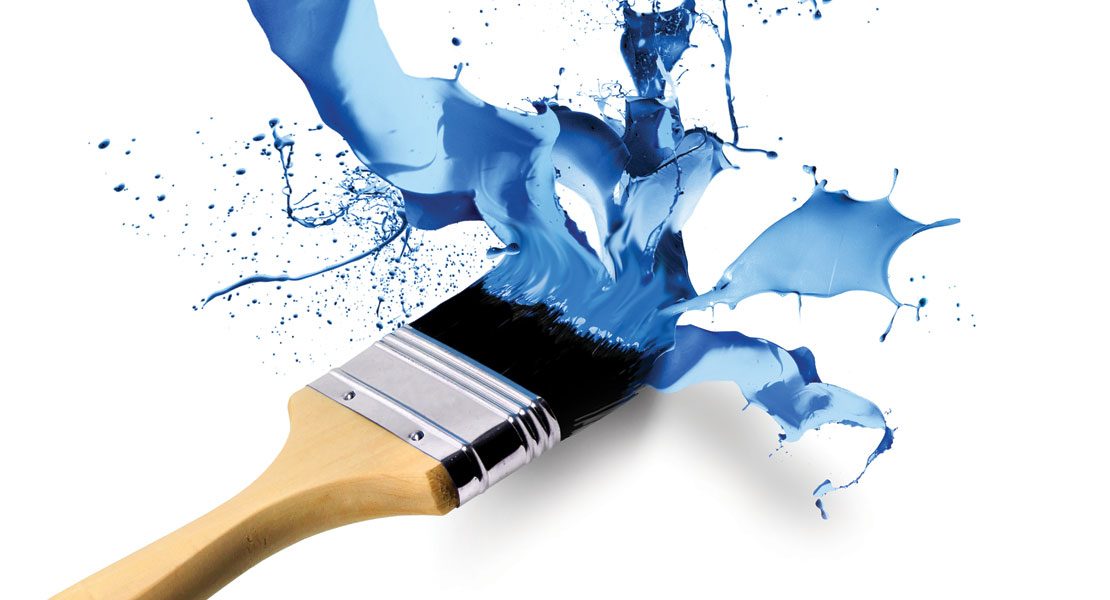
By Angela Bristow
You’ve spent the winter staring at the same four bland walls. With spring bringing color to the outdoors, why not bring new life to the indoors with some new paint, tile or wallpaper?
While this year’s Pantone Color of the Year, Radiant Orchid, is probably too wild for most homeowners, there are literally hundreds of other colors to choose from that will match any mood or style. Regardless of the color you choose, many consumers will be pleased to know that paint formulas are going green. “Probably the biggest trend is zero VOC materials,” says Shane Smoyer, owner of Painting and Decorating by Shane in Allentown.
“A lot of people that are selling a place or moving into a place are sticking with a neutral palette. It gives you more universal appeal than going with these bold colors,” says Aaron Roche, owner of the Breinigsville business Roche Painting.
Smoyer adds: “There’s a big trend going back into grays again. White ceilings, white trim are still very popular. Back in the ’90s, it was color on the ceiling, but we’ve kind of backed away from that, and now it’s white on the ceiling.
“I don’t see a lot of edgy style. In most peoples’ homes they want it [paint] to last a long time. Everybody’s concern, regardless of economic demographic, is to have that mass appeal for what they’re doing.”
There are apps for just about everything these days, so it should come as no surprise that there are some free apps to aid in choosing paint colors. Paint manufacturers Benjamin Moore and Sherwin Williams have apps that allow the consumer to take a picture of a color and then have it cross-matched with one of the manufacturer’s colors. It’s not an exact match, but Smoyer says that some people may find it helpful in narrowing down their options in colors.
Look in magazines and online to find a room, or something in a room, that gives you inspiration and use that as a starting point for your color choice and design direction.
Often the best first step in selecting a color, says Smoyer, is to decide which colors you don’t like. Look in magazines and online to find a room or something in a room that gives you inspiration and use that as a starting point for your color choice and design direction.
“Lighting plays a huge roll in how a color will look in a room,” said Roche. “If anybody is unsure of a color, get a sample and put it on the wall just to give a better representation of what that color will look like in the room.”
Then begin considering the function of the room. “Typically cooler colors are more calming and would be for quieter spaces like bedrooms and living rooms. Warmer colors from a psychology standpoint are more for dining areas, kitchen areas. Warmer colors are associated with eating. Earth tones are still very popular. A lot of people that are doing kitchen and bath renovations are using them. They aren’t going out of style… and don’t involve taking a risk, and they work well with pretty much everything. They’re universal colors,” says Smoyer.
Once you’ve made your color choice, you may be eager to run home and get it up on the wall. But before you get to the fun part, there’s a step that shouldn’t be skimped on if you want good results. Roche says: “I always tell people that aside from color, aside from cost, it all starts with the preparation. Preparation is key to having the completion that people are looking for in their minds – proper sanding, proper spackling, proper priming, proper rolling and brushing.”
Always practice due diligence when hiring a design firm or painter by looking online for unbiased reviews of the firms you’re considering and calling their references. Be wary of companies that estimate the cost far below other estimates and those that ask for a large amount of upfront money. Be sure to get details in writing such as start and completion dates and the total cost.
Roche offers one additional point of caution. He says that it isn’t realistic to expect that one coat of paint will provide adequate coverage just because you’re using a primer and paint combo product. When applying paint on water stains and bear metal, wood, drywall or spackle, he says you will still need to use a primer before painting to truly cover those areas and get an overall uniform finish.
Some wall treatments that are now passé include faux techniques using paint. “They are becoming less popular for sure. Any technique is so subjective, and recreating that is very difficult to do and have your customer happy,” says Smoyer.
Also, no longer on-trend is wallpaper. The exception to that is grass cloth. It is a natural product that Smoyer says people are more tuned into right now. Manufacturers are incorporating metallic colors into the cloth and expanding the variety of available colors. Grass cloth is more expensive than regular wallpaper because it is often hand woven and dyed. “One thing with it, color is very irregular, you will see every seam. When I apply it, I space the seams evenly so there is some symmetry on the wall,” said Smoyer.
Are you considering putting tile on your kitchen or bathroom walls? Things are changing in that area as well. “What I’m finding is huge are the glass tiles. There’s the glass with foil imbedded in it and just the [regular] glass tiles,” says Smoyer. He says that 1-inch by 3-inch tumbled unglazed tiles have become popular with those who like the natural look. Floor tiles that look like wood in the 6-inch by 24-inch size have become really hot among designers and consumers for use on walls. Subway tile or tile set in the bricklaying style is still very popular and classic. Design trends have abandoned the use of square wall tile, generally seen in the 3-inch by 3-inch size.
A lot of floor tiles and tumbled tiles have irregular edges allowing the grout lines, Smoyer says, to have a more natural look, but many of the glass tiles are still available with smooth, regular edges. Glass tiles also have the benefit of being very durable and are easily cleaned with multi-purpose cleaner.
So whether you fancy some fresh paint, grass cloth, or tile on your walls, many of today’s products are both aesthetically pleasing and earth-friendly. Changing a wall or two is often an economical and easy way to take your home from bland to amazing.

